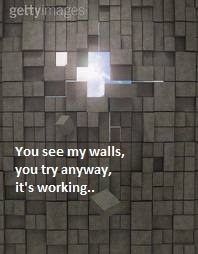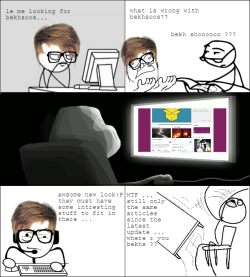Queered: What’s To Be Done with Xcentric Art
1,165 viewsPublication Date: November 21, 2011.
Description: A catalogue of art works and texts that have shaped the Queering Yerevan movement. It includes documentation from various exhibitions and art happenings, photography, critical texts, excerpts from experimental writing, fragments from the QY blog, and email correspondence from 2007-2011.
__________________________________________
There is so much to write about this book, so much to write from so many different perspectives. When I first started reading the preface and I saw the inner collective struggle to come up with a word to identify queer identity, it made me think about us in Meem and how countless of emails and conversations revolved around us trying to find suitable translations to our identities. From WOW (Women Oriented Women), the collective became Queering Yerevan, a more wholesome umbrella which gathered under it a multitude of identities. The more I read, the more I sensed the familiar. It is not to say that the book is not unique in its own way, but a part of me felt so excited about the fact that the movement I am part of in Lebanon questioned the same things as the movement in Yerevan. In some odd way, it felt like my identities were in some kind of an osmosis and that my struggle, in a larger queer sense, transcended small labels and geographies.
Reading the book, struggling through the Armenian writings, understanding that as a “diasporan” stories and histories of translation and language were a main part of shaping, exploring questioning identities, gave me a sense of relief.
From the collective’s individual exploration of the word queer, to pages filled with personal experiences. From artistic reviews of events that have taken place within the spaces of the collective, to snapshots of video art. Everything comes together to give a rounded idea of how a bunch of individuals have influenced each other creating a synergy that was a must to compile and archive.
I have yet to read the whole book, for me it feels like a very intimate encounter. Its last part are pages and pages of email correspondences. A sneak peak into what shaped it all for the group. For me it is an inspiration and a reminder. We must create and archive our identities and history, we must celebrate them, learn from them and put them out there for others, because our experiences matter and our creations are expressions of our identities and existence. For now I leave you readers with a few questions answered by the amazing people behind the book.
Tell us a bit about the Queer movement in Armenia.
Shushan Avagyan: To be honest with you, I can’t pretend to know much about the queer movement in Armenia, or I don’t dare to speak for all the queers in Armenia, as we all are very different, and by that I mean ideologically divergent. I can say though that this is perhaps one of the most opportune moments in Armenian history in which diverse voices are heard and tolerated to a certain extent. We haven’t had a time like this (not that I can think of) when a central (and censoring) press like Tigran Mets, that used to be the publishing house of the Central Committee of the Communist Party of Soviet Armenia and later a periodical publication attached to the government of Armenia, a power-holding institution that, as we were printing our book, was also printing a gilt-edged book on the Armenian Catholicos Karekin II, would run its machines for such eccentric and decentralizing publications as Queered.
So what is this book about?
Arpi Adamyan: First of all the book presents, interprets, and queers (on multiple levels) the activities of the Queering Yerevan Collective during the first four years of its existence. On a basic level, it consists of two parts: the first part documents most of the events and happenings that we have carried out between 2007 and 2011, including new art work and critical texts, in a reverse chronology. The second part includes an email correspondence and discontinuous threads of e-discussions from a closed listserv, which have been selected and arranged in a slightly varied chronological order. So it starts in the present and moves back in time to the early period of the collective’s formation (that’s in the middle of the book) from which point begin the letters, moving the reader forward to the present. You can think of Queered as a catalogue of works, an artist’s book/object, a thick artzine or a history of a contemporary art movement that has situated itself in Yerevan. The book includes the works of over thirty women who use different media including video, photography, painting, graphics, installation, performance art, text and so on. The compilation and production of this book has also been a fascinating experience for us in the sense of deconstructing the content (both literally and physically) and binding everything back together through various bookmaking processes. So maybe the book is also about how something is bound and then unbound and then rebound again, but differently.
Why is it important to have such a book out?
Nancy Agabian: It’s important for any queer identified young person in Armenia or the diaspora to know they’re not alone, more urgently in Armenia and other places where homophobia is more intense and there is less support for young gay people. I think it’s important for talented Armenian artists who may operate outside of official channels to be seen and heard. Furthermore, women’s unique lives and ideas are not being produced and represented enough in Armenia; when they are, many times men who control the media falsify or misleadingly frame info and images in a sexist way. This book was created by queer-identified women and feminist artists. It’s the first book of its kind from Armenia and it honestly depicts social change in action through a global, cross-cultural, constantly shifting collective of women.
Will it be available to the grand public?
Shushan Avagyan: The book is sold at all major bookstores in Yerevan, and we are currently trying to figure out how to distribute copies via our blog http://queeringyerevan.blogspot.com>.
Can you tell us a bit about the D.I.Y. process?
Shushan Avagyan: We had first wanted to publish a “manifesta” after our first happening in 2008 titled “Coming To You To Not Be With You,” however we didn’t get any funding (we had applied to Astraea International Fund, the Norwegian Embassy in Armenia, and Open Society Institute). We were partnering with the Women’s Resource Center and Utopiana Organization at the time. The idea of a publication kept coming up in various discussions and by 2009 it had transformed to an epistolary book titled “Two Years in Correspondence,” which would include emails from the collective’s early period, debates about art, outreach, activism, and arguments around concepts of feminist art, radicalism and sexuality. In 2010 Veken Gueyikian of AGLA NY helped us fundraise through Kickstarter, and we were able to successfully raise the necessary funds for the publication of the correspondence. For various reasons the project got pushed back and during this period of hibernation (and perhaps even maturation) the idea of the book changed once again and after a long excursus returned to a its original concept of the “manifesta,” however now enriched with four years of experience and materials representative of a movement called QY. lusine talalyan, Arpi Adamyan and I spent six months working on the design, layout and contents of Queered. We had almost no place to work from, so Lusine’s heavy desktop computer traveled to Stepanakert for a weeklong retreat, then it moved to the house of Meline Ter Minassian and Elaine Krikorian, and we moved (in) with it, hoping that our hosts wouldn’t mind our presences in their spare bedroom or living room (whenever they had house guests) from early morning till late at night. Perhaps it’s not strange anymore that since last year we have been talking with the Swedish curatorial collective Hög Kvarteret about a possible 2012 happening on nomadics and e-migration, something we have been exploring and experiencing through Queered since May. But on a more serious note, we have learned a lot from this somewhat disruptive and disordered (yet at the same time empowering) process of samizdat, where you have to use all the possible resources, give up all possessions (including time), work beyond the limits of your capacity in order to produce something like Queered. So now it’s out and we have no way of knowing what will happen after this.
A very inspired Shant





Leave a Reply